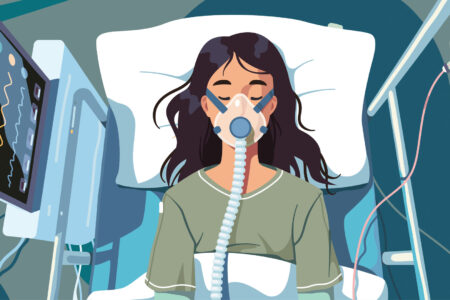
Every schoolteacher, parent or person standing in the place of a parent is justified in using force by way of correction of a pupil or child, as the case may be, who is under his care, if the force does not exceed what is reasonable in the circumstances.
Section 43, Criminal Code of Canada
Since 1892, section 43 of Canada’s Criminal Code has provided a legal defence for adult actions that would otherwise be considered physical assault on children – if the intent was “correction” through corporal punishment.
Until 2004, this colonial-era defence could be used to shield parents and teachers even when their striking of children caused bruises and welts – if it were deemed to have been well-intentioned.
This changed with a 2004 decision of the Supreme Court that applied limits to the definition of “reasonable” punishment: it was to be administered only by a parent (not a teacher) who is calm (not frustrated), with the hand (not an object), to the body (not the head) of a child who is capable of learning from it, using force that is transitory and trifling (not harmful). Also, such punishment may not be applied before a child turns two and must stop once they turn 13.
In 2004, this ruling was seen by many as a substantial step forward in the protection of children. In the almost 20 years since, rapidly growing research on the impact of physical punishment has changed the landscape and shifted global norms.
Sixty-five countries have completely removed criminal and civil defences to the physical punishment of children. It’s time for Canada to do the same and repeal section 43.
What is the evidence for that?
Physical punishment contributes to aggression and violence
The conclusions of the research are clear and consistent: children who are physically punished are more likely to solve problems later in life with aggression, which may take the form of bullying, dating violence and/or intimate-partner violence.
This relationship is causal; longitudinal studies have repeatedly found that even “mild” physical punishment (within the parameters of the Supreme Court’s definition of reasonable force) increases aggression across age groups. Not only do children learn to hit by seeing their parents do it, but evidence shows that physical punishment can interfere with brain development – specifically of the prefrontal cortex, which is central to children’s ability to regulate emotions.
Physical punishment contributes to mental health problems
Children who are physically punished – within the Supreme Court’s limits – are more likely to develop depression, anxiety, substance-use disorders, psychiatric disorders and general maladjustment.
There are two main reasons for this. First, parent-child attachment, which serves as the foundation of healthy psychological development, gets disrupted when a parent intentionally inflicts pain on a child. Second, the stress induced by physical pain, even without injury, can disrupt the brain’s stress-regulation mechanisms over time.
Physical punishment escalates in severity
The reality is that a majority of physical-abuse cases (i.e., injury or substantial risk of injury) begin as physical “punishment.” Three waves of Canada’s national study of child abuse revealed that three-quarters of substantiated physical abuse occurs in the context of punishment.
Children who are spanked are seven times more likely to also be punched or kicked by their parents than children who are not spanked. Why? Once a parent has begun to hit, the stakes have been raised. If the child cannot or will not comply, the parent is more likely to respond with increasingly intense physical punishment. The best way to prevent violence against children is to inhibit the initial impulse to hit.
Physical punishment does not improve well-being or behaviour
There is no empirical evidence to support the idea that children learn anything useful from physical punishment. It has never been found to decrease aggression or to increase pro-social behaviour or social competence. It predicts solely negative long-term outcomes.
The mere existence of section 43 signals to parents that hitting children is acceptable. Rather than inhibiting aggressive impulses, it green lights them and their cascading impacts across society. Thousands of children are legally hit and hurt every year, placing them at risk for mental-health problems, injury and fatality – and contributing to intergenerational transmission of violence.
One of Canada’s priorities is to end violence against women and girls, yet section 43 allows girls as young as two to be hit. In many instances, this is the first time they hear, “I hit you because I love you” – a message that is internalized and carried with them throughout life. It is critical to remove the legal licence for these actions if Canada is to have any hope of addressing gender-based violence.
The kids are not all right: What will the government do about it?
Section 43, rooted in ancient Roman law and entrenched in English common law, is a relic of an age when pain was believed to be an educational and purifying force. Today, Canada is a pathfinding country for the Global Partnership to End Violence Against Children. It must take leadership by removing this powerful symbol of the acceptability of violence against children.
There is an opportunity for evidence to truly inform policy. Bill S-251, which would repeal section 43, is at committee stage in the Senate while Bill C-273, which has the same goal, has been introduced in the Commons.
Repeal is supported by the Truth and Reconciliation Commission’s Call to Action #6, the United Nations Committee on the Rights of the Child, and 680 professional organizations across Canada.
Current scientific knowledge is clear: hitting children is harmful to their development. Canada has the opportunity to demonstrate its commitment to preventing violence, promoting mental health, and upholding children’s rights to protection and dignity by repealing section 43 of the Criminal Code.










